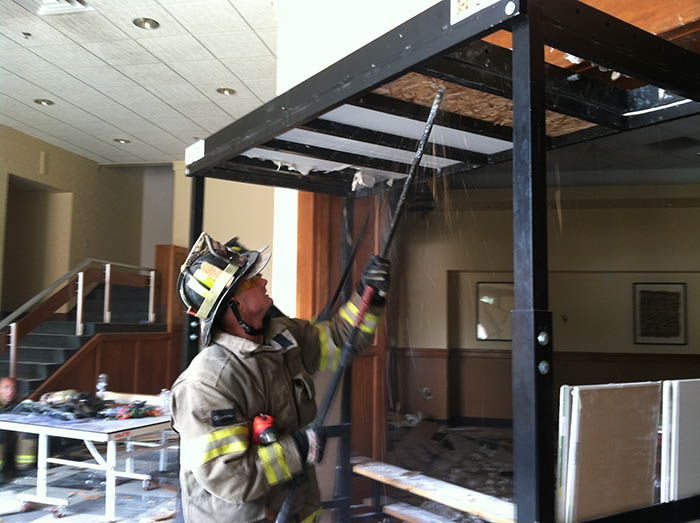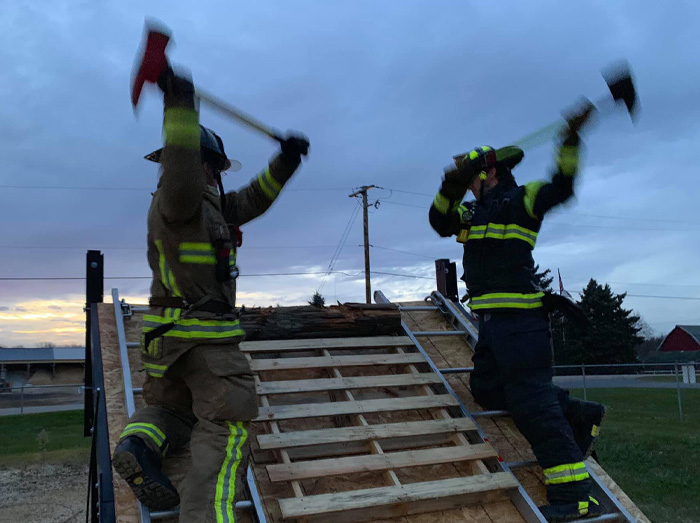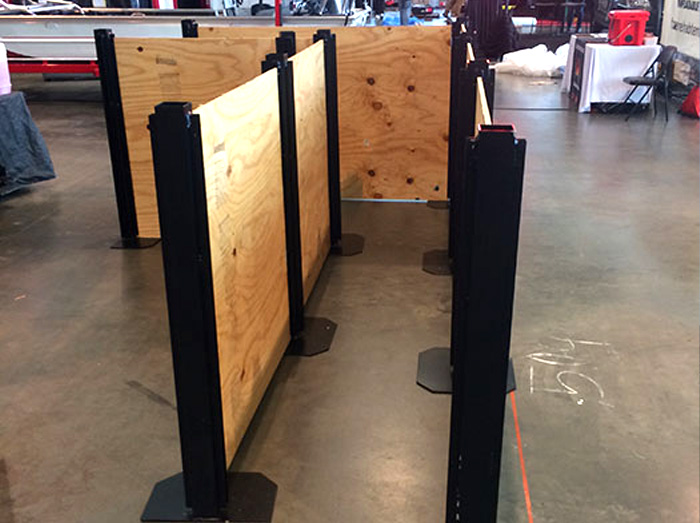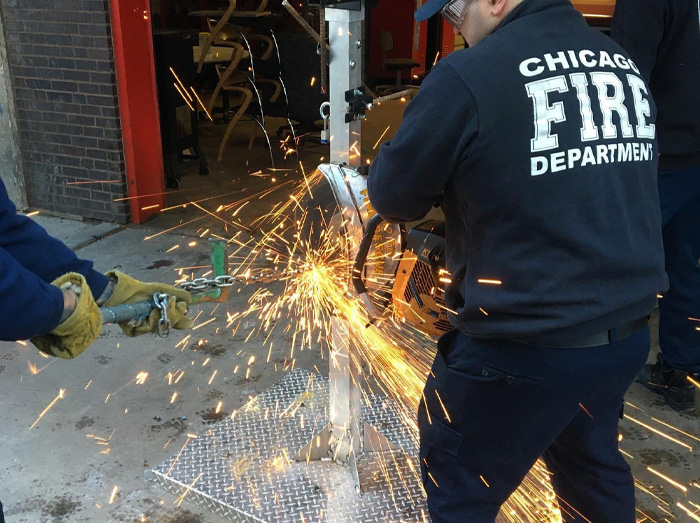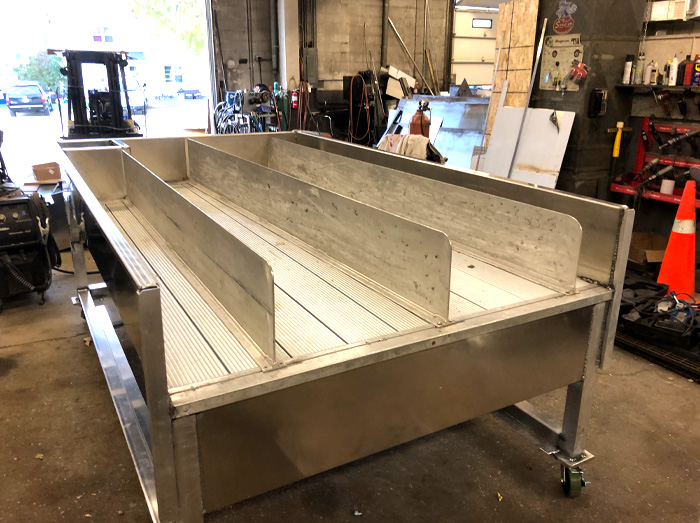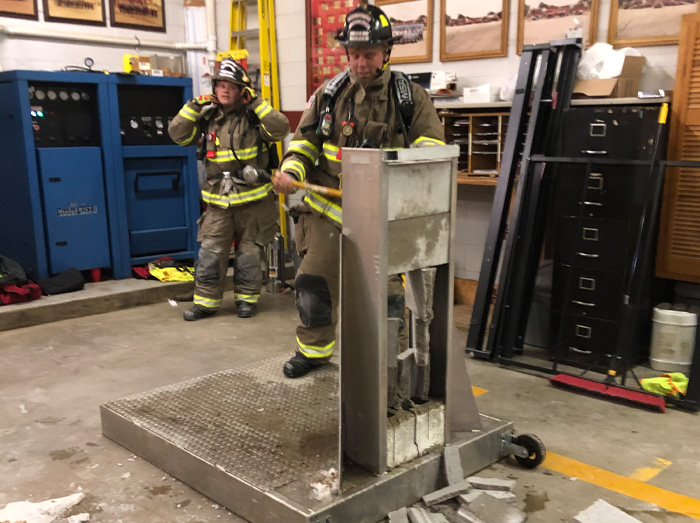King Training Innovations
Vertical Ventilation
Vertical Ventilation is an important task for the TRUCK CO. Safety always needs to be our #1 prority. Be familiar with building construction, fire behavior and laddering. 2 means of egress is a must. Coordinated fire attack with proper placement of your ventilation hole will help prevent fire spread and will also make the interior crews happy with a better environment.
Vertical ventilation: One of the fireground's most hazardous tasks
Vertical ventilation should only be accomplished when it is necessary, can be completed safely with 2 means of egress
By Michael Lee
Vertical ventilation is one of the most hazardous tasks accomplished on the fireground. Vertical ventilation should only be accomplished when it is necessary and can be completed safely.
The key to success in delivering this tactic is to have two means of egress, limit total time of work on roof, don't let the ventilation hole get between you and your means of egress and don't loiter to admire your work when complete!
Vertical ventilation can be accomplished by utilizing existing openings in the roofing deck or making our own.
Natural openings are those structural items that require a hole to exist in the roof of a structure. The size of the opening should be selected based on availability and the largest possible. Multiple floor structures should have a number of options available.
Vertical shafts that run the height of the building will work the best, such as stairways, elevators and large utility shafts. Remember that skylights, scuttles, monitors, attic vents and swamp coolers can all be removed to assist with ventilation.
NOTE: Ladders should be used to provide safer footing for any pitched roof operation and to spread the load on any flat room. There should always be two means of escape for any roof operation and a protection hose line should be in place on the roof.
Roofs should also be checked to make sure they are safe to work on. Spongy material, bubbling tar, melted snow or dry spots on a roof, or smoke or heat emitting from the roof are some of the signs that the integrity of the roof may be compromised.
When accessing your ventilation spot, select your ventilation site based on closest area over the seat of the fire as well as an area where a sufficient size hole can be cut. Crews accessing the roof should have, as a minimum, a gas-powered saw (chain or circular), an axe to louver the decking after the cut (and if the saw quits) and a pike pole/trash hook to punch the ceiling when necessary.
Some crews will say always take a roof ladder with you. If your roof pitch is such that you don't feel comfortable working without one, take one.
In addition, recent rain or snow, or standard pitches on concrete or tile roofs may warrant the addition of a roof ladder.
Ensure the primary firefighter to access the roof is able to sound the roof for stability. Sound your rafters all the way to where your cut will be.
Locate and mark the position of the rafters for the individual utilizing the saw. Remember that a four by four hole will be considered a minimum sized hole.
Don't cut the roof rafters — in a truss system that may be weakened by fire, this could be an initiator of a collapse of the roof support system.
When cutting your ventilation hole, consider making your farthest cuts first to ensure your last cut places you closest to your egress point. Louver the roof deck and prepare to punch the ceiling on the ceiling of the floor under your cut.
DO NOT PROCEED without checking with command — interior crews must be ready! Once given the go ahead by command, punch the ceiling.
Again, consider making the farthest holes and work towards your egress. All personnel should be in full SCBA for this event. Once the ventilation task is complete, get off the roof!
Remember that ventilation is a task that will be required on all fires! The primary questions are when and how. The primary purpose of ventilation is to remove all accumulations of heat and combustion products.
At this time, I would like to stand firmly upon my soap box and preach. While all methods of ventilation have their place in the tool box of tactics, I consistently see firefighters who have forgotten that we are at a fire to search, rescue and extinguish fires -- not to see how many windows we can break on a single fire.
I have been on small fires that have been extinguished and noticed as I exited the structure that nearly every window had been broken out! Why?! This is a problem for a few reasons:
• I cannot perform positive pressure on a structure that will not retain pressure!
• I am forced to consider a boarding company to ensure a possible crime scene is not contaminated after we leave.
• The total cost of repairs can be reduced if these windows do not need replacing.
• We look stupid when we break out windows from areas where there was no fire involvement
Remember, we are there to make things better if possible, not drive up the bottom line costs for home repair/replacement after a fire! I now step off the soap box and continue with the closing of the article.
This article quickly addressed one of the hallmarks of our profession. This skill of ventilation is an art and can make or break the direction of numerous activities on a fireground.
We owe it to ourselves to be practiced at this process so that we can create an environment that will allow for safe, rapid victim location and rescue, fire location and extinguishment and creating the safest possible environment for our brothers and sisters to work in.
If it’s been a while since your crews walked through a ventilation process, take the time to practice. If nothing else, walk through how your team will perform a vertical ventilation scenario as a crew. Perfect practice makes for safer effective crews.
About the author
Michael Lee has 25 years experience in pre-hospital paramedic experience and about 20 years experience in the fire service. He started as a FF/Paramedic and worked up through the ranks, including training officer, to his current position as battalion chief. He currently serves as battalion chief at Mountain View Fire Protection District in Colorado. He is currently filling the role of safety officer for FEMA USAR Colorado Task Force One and has military service in the U.S. Navy. To contact Michael, email This email address is being protected from spambots. You need JavaScript enabled to view it..When you subscribe to the blog, we will send you an e-mail when there are new updates on the site so you wouldn't miss them.


